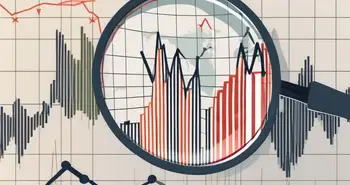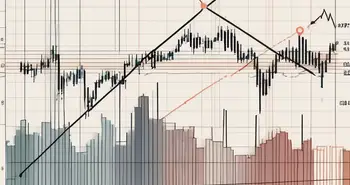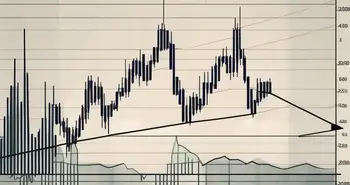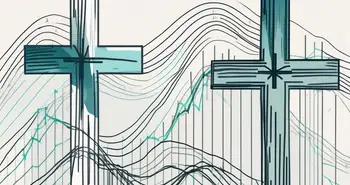Unveiling the Flag Pattern: A Guide to Identifying and Trading this Powerful Technical Indicator
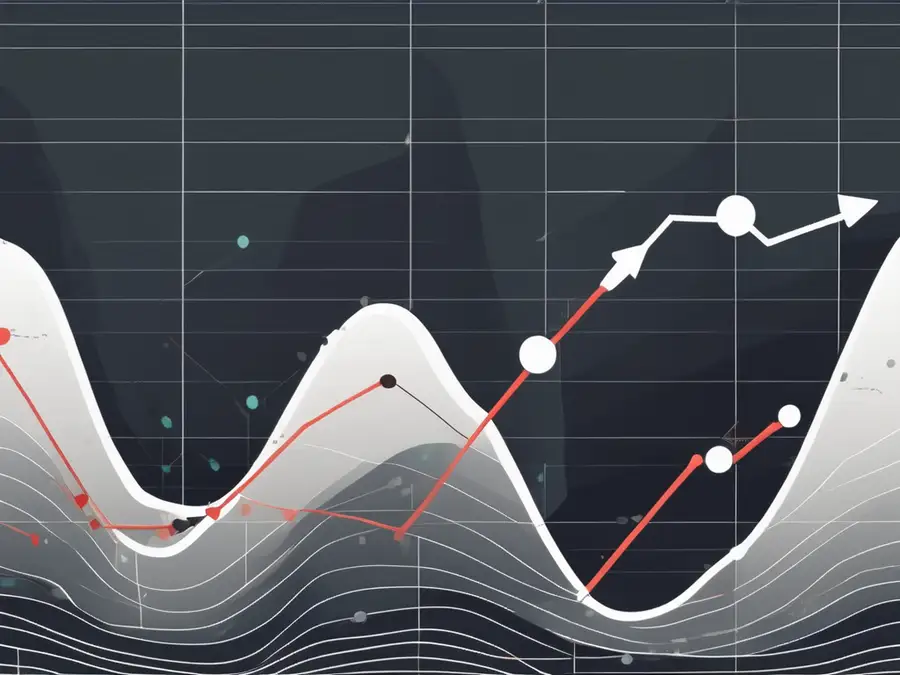
I have been trading in the financial markets for over a decade, and throughout my journey, I have come across various technical indicators that have the power to significantly impact trading decisions. One such indicator that has always intrigued me is the flag pattern. In this article, I will unveil the secrets of the flag pattern, explaining its basics, how to identify it on trading charts, trading strategies to exploit its potential, common mistakes to avoid, and more. So, let's dive into the fascinating world of the flag pattern and discover how it can enhance your trading skills.
Understanding the Basics of Flag Pattern
Before we delve into the intricacies of the flag pattern, let's begin by understanding its foundation. So, what exactly is a flag pattern? In simple terms, a flag pattern is a continuation chart pattern that occurs after a strong price movement, signaling a brief period of consolidation before the price resumes its previous direction.
What is a Flag Pattern?
A flag pattern resembles a rectangle-shaped formation, where the price movements consolidate into a narrow range, forming two parallel trend lines. The upper trend line, known as the flag resistance, is typically drawn by connecting the high points, while the lower trend line, known as the flag support, is formed by joining the low points. This consolidation phase represents market participants taking a breather before the next big move.
Importance of Flag Pattern in Trading
The flag pattern holds immense importance for traders as it provides a valuable insight into potential trading opportunities. By identifying a flag pattern, traders can anticipate the resumption of the previous price trend, enabling them to enter trades with advantageous risk-reward ratios.
Components of a Flag Pattern
A complete flag pattern consists of three key components:
- The Flagpole: The flagpole serves as the initial impulsive move, where the price experiences a sharp and rapid up or down movement. This forms the foundation of the flag pattern.
- The Flag: After the flagpole, the price enters a consolidation phase, creating the flag pattern itself. This phase is characterized by narrower price ranges, indicating a temporary pause.
- The Breakout: The breakout marks the end of the flag pattern, signaling the resumption of the primary trend. Traders should closely monitor the breakout for potential entry or exit opportunities.
Identifying the Flag Pattern in Trading Charts
Now that we have grasped the fundamentals of the flag pattern, let's explore how to identify it on trading charts.
Spotting the Flagpole
The first step in identifying the flag pattern is locating the flagpole. This can be done by identifying a strong and rapid price movement in either an upward or downward direction. The magnitude and duration of the flagpole can vary, but it should stand out as an outlier on the chart.
Recognizing the Flag
Once the flagpole is identified, the next step is to look for the consolidation phase or the flag itself. This phase is characterized by price movements that are confined within two parallel trend lines. Traders should observe the flag for a sufficient period to ensure that the consolidation is substantial and stable.
Confirming the Breakout
After locating the flagpole and recognizing the flag, it is crucial to confirm the breakout. Traders should wait for the price to break above the flag resistance (in an upward breakout) or below the flag support (in a downward breakout) before considering potential trades. This confirms the resumption of the primary trend and eradicates false signals.
Trading Strategies Using the Flag Pattern
Now comes the exciting part – utilizing the flag pattern in trading strategies to maximize profits and minimize risks.
Entry Points and Setting Stop-Loss Orders
When trading with the flag pattern, entry points can be established by entering trades at the breakout level, simultaneously setting proper stop-loss orders below the flag (in an upward breakout) or above the flag (in a downward breakout). This ensures that potential losses are limited in case the breakout fails or the price reverses.
Predicting Price Targets
One benefit of the flag pattern is its potential to help traders predict price targets. This can be achieved by measuring the length of the flagpole and applying it to the breakout level. By doing so, traders can estimate the potential price movement that could be achieved after the breakout.
Managing Risks with the Flag Pattern
Risk management should always be a priority in trading, and the flag pattern can assist in achieving this goal. By understanding the flag pattern's structure and characteristics, traders can avoid overleveraging, set appropriate position sizes, and employ trailing stop-loss orders to protect profits as the trade moves in their favor.
Common Mistakes to Avoid When Trading with Flag Pattern
Despite the advantages offered by the flag pattern, traders often stumble upon common mistakes that can hinder their success. Let's explore some of these pitfalls and learn how to steer clear of them.
Misinterpreting the Flag Pattern
One of the biggest mistakes traders make is misinterpreting the flag pattern. It is crucial to distinguish between a true flag pattern and ordinary price fluctuations. Lack of patience and jumping into trades without proper confirmation can lead to false signals and unnecessary losses. So be careful and always wait for the confirmation of the breakout.
Ignoring Volume Changes
Volume plays a vital role in understanding market dynamics. Ignoring volume changes during the flag pattern can be detrimental to trading success. A surge in trading volume during the breakout confirms the strength of the pattern, while a decline in volume during the consolidation phase might indicate a weak flag pattern. Always keep an eye on volume to increase the odds of successful trades.
Neglecting the Overall Market Trend
While the flag pattern can be a powerful indicator, it should never be analyzed in isolation. Neglecting the overall market trend can result in placing trades that go against the prevailing market sentiment. Always consider the broader market condition and align your trades accordingly.
Throughout my trading journey, I have witnessed the incredible potential of the flag pattern. However, it is essential to remember that no trading strategy is foolproof, and careful analysis, risk management, and continuous learning are crucial for success in the markets. By incorporating the flag pattern into your trading arsenal and avoiding common pitfalls, you can elevate your trading skills and increase the profitability of your trades.
FAQ
What is a flag pattern?
A flag pattern is a continuation chart pattern that occurs after a strong price movement, signifying a temporary pause before the price resumes its previous direction. It consists of a consolidation phase characterized by two parallel trend lines.
How do I identify the flag pattern?
To identify the flag pattern, you need to spot the flagpole, recognize the flag, and confirm the breakout. The flagpole is an initial impulsive move, the flag is a consolidation phase with parallel trend lines, and the breakout confirms the resumption of the primary trend.
What are some trading strategies using the flag pattern?
When trading with the flag pattern, you can consider entering trades at the breakout level, setting stop-loss orders to manage risks. Additionally, you can use the length of the flagpole to predict potential price targets. Risk management is crucial in trading, so always employ proper position sizing and trailing stop-loss orders.
What common mistakes should I avoid when trading with the flag pattern?
Some common mistakes to avoid include misinterpreting the flag pattern, ignoring volume changes, and neglecting the overall market trend. Always wait for confirmation of the breakout, pay attention to volume changes, and consider the broader market condition for successful trading.
Remember, trading is an ever-evolving journey, and each new pattern or strategy you incorporate can potentially enhance your trading results. Take the time to understand the flag pattern and its nuances, practice in a demo account, and gradually implement it into your trading plan. The flag pattern has the power to unlock profitable opportunities – use it wisely and watch your trading skills soar!
Ready to put the flag pattern into action and elevate your trading game? Join Morpher today and experience a trading platform that's as innovative as your strategies. With zero fees, infinite liquidity, and the ability to trade across a multitude of asset classes, Morpher is the perfect partner for your trading journey. Whether you're looking to invest fractionally, short sell without interest fees, or leverage your trades up to 10x, Morpher has you covered. Plus, with the safety of the non-custodial Morpher Wallet, you'll have full control over your investments. Don't miss out on this unique trading experience built on the Ethereum Blockchain. Sign Up and Get Your Free Sign Up Bonus now and join the revolution at Morpher.com!

Disclaimer: All investments involve risk, and the past performance of a security, industry, sector, market, financial product, trading strategy, or individual’s trading does not guarantee future results or returns. Investors are fully responsible for any investment decisions they make. Such decisions should be based solely on an evaluation of their financial circumstances, investment objectives, risk tolerance, and liquidity needs. This post does not constitute investment advice.

Painless trading for everyone
Hundreds of markets all in one place - Apple, Bitcoin, Gold, Watches, NFTs, Sneakers and so much more.

Painless trading for everyone
Hundreds of markets all in one place - Apple, Bitcoin, Gold, Watches, NFTs, Sneakers and so much more.

